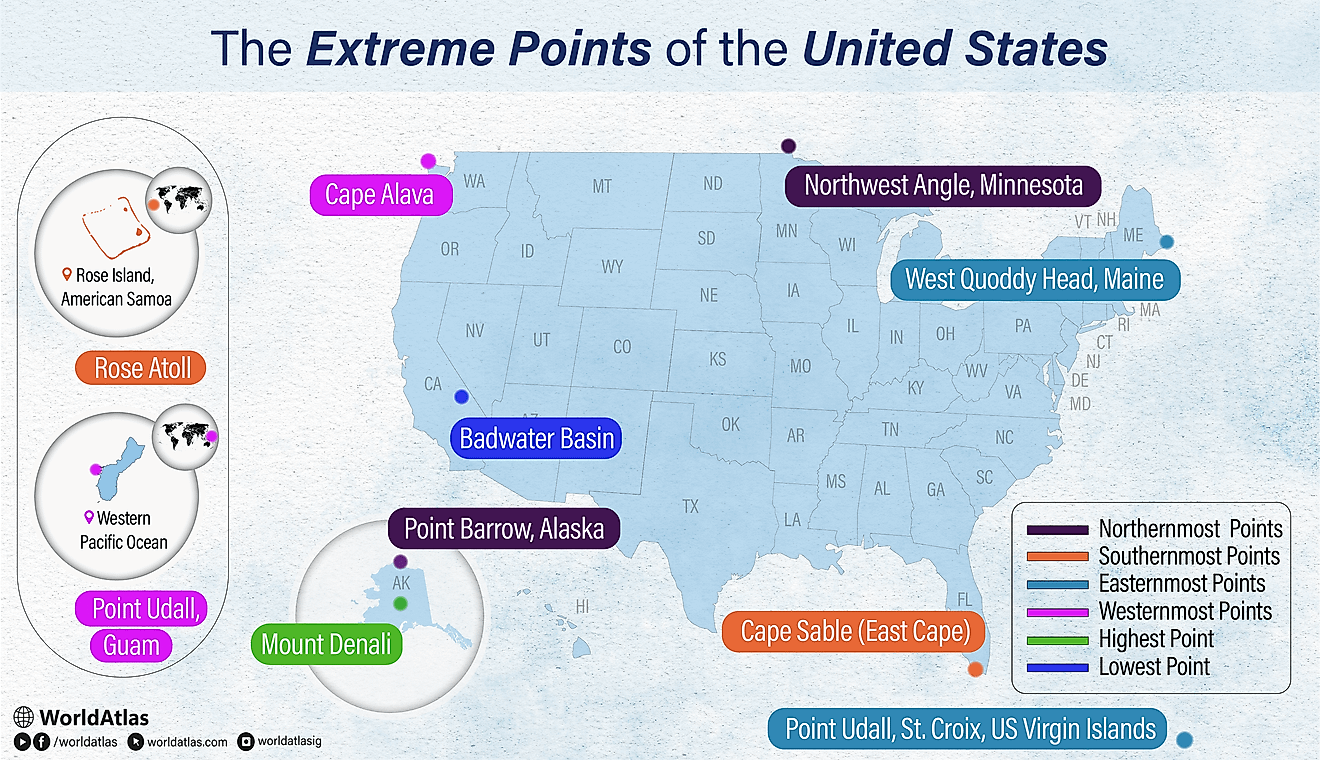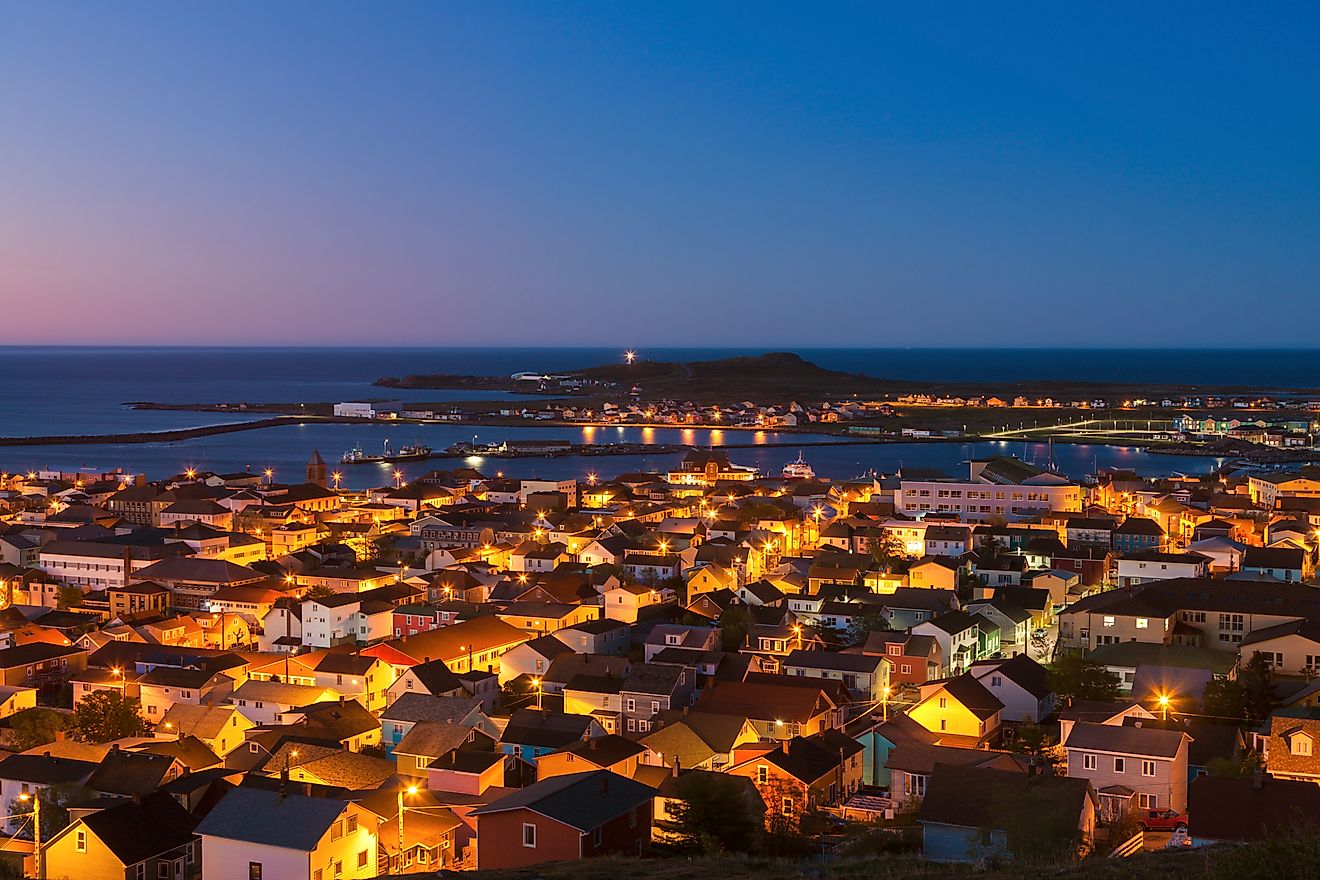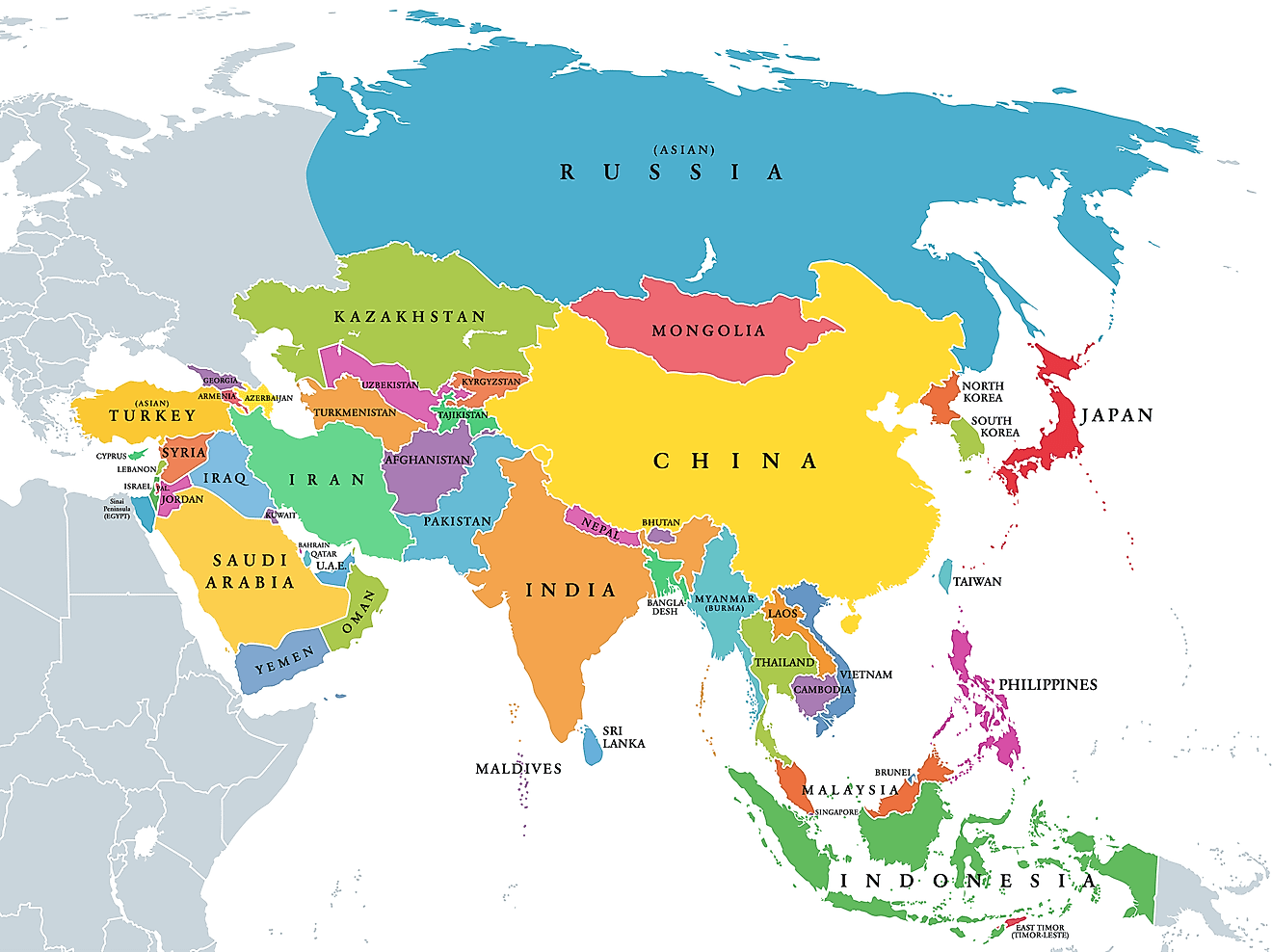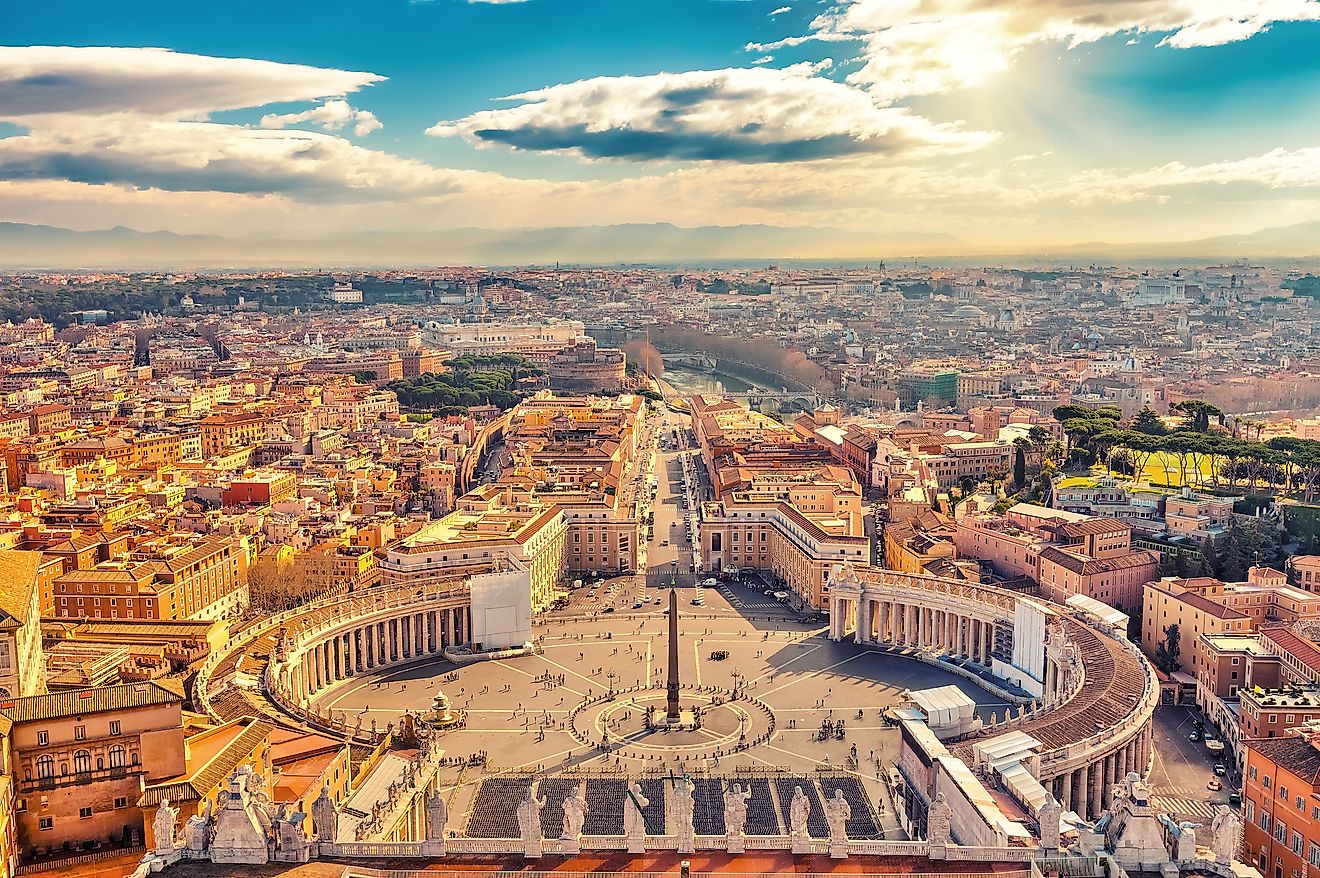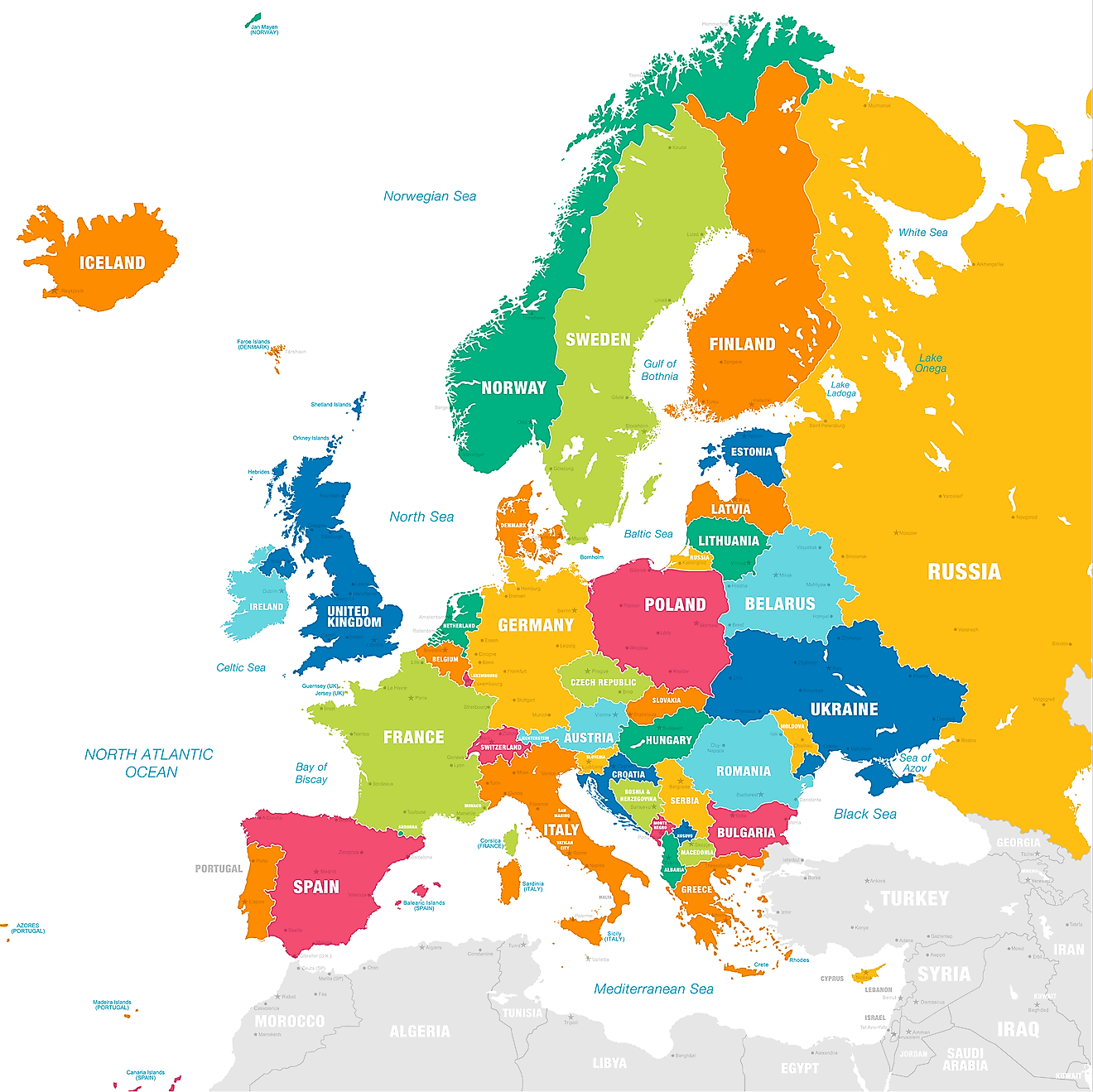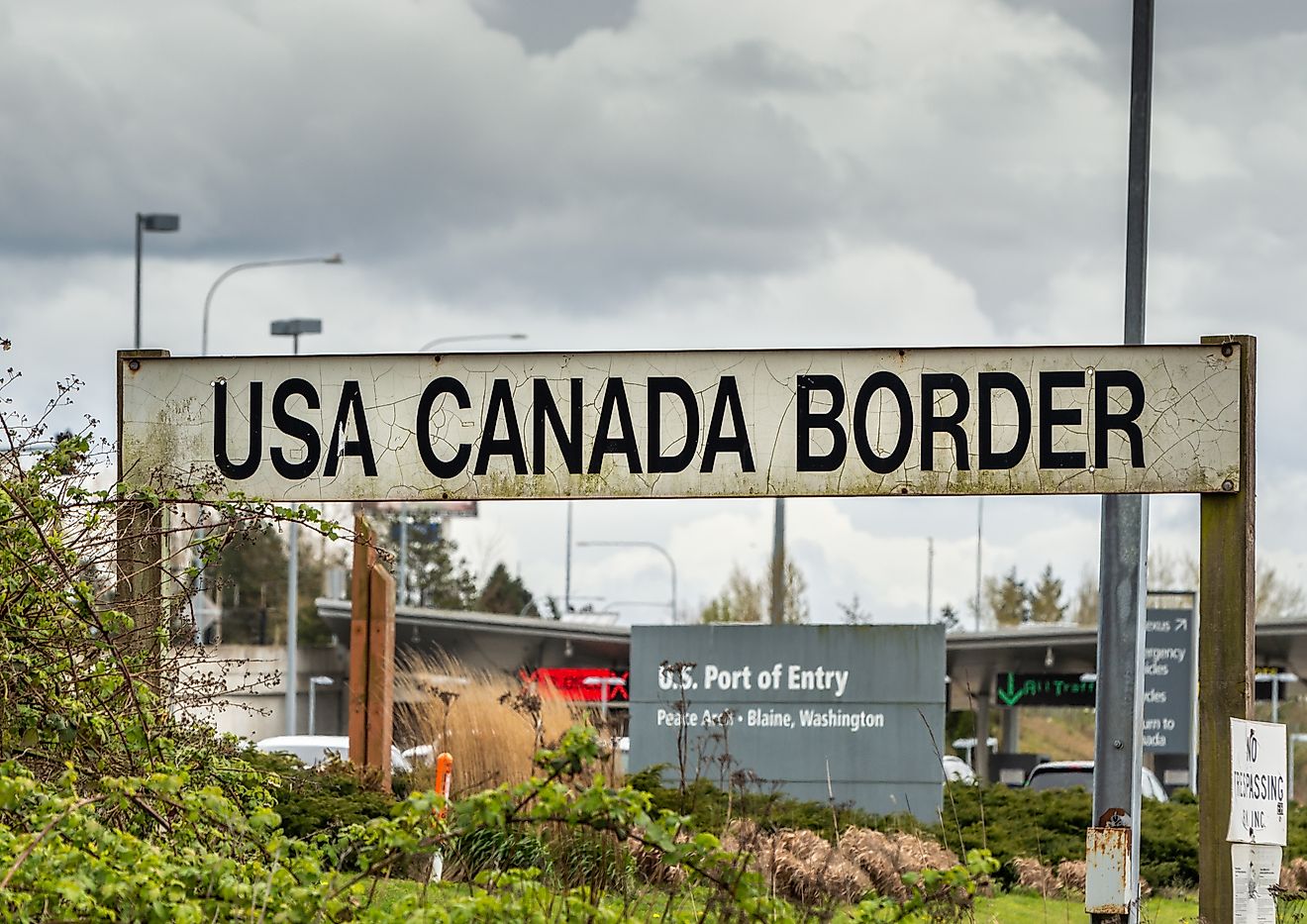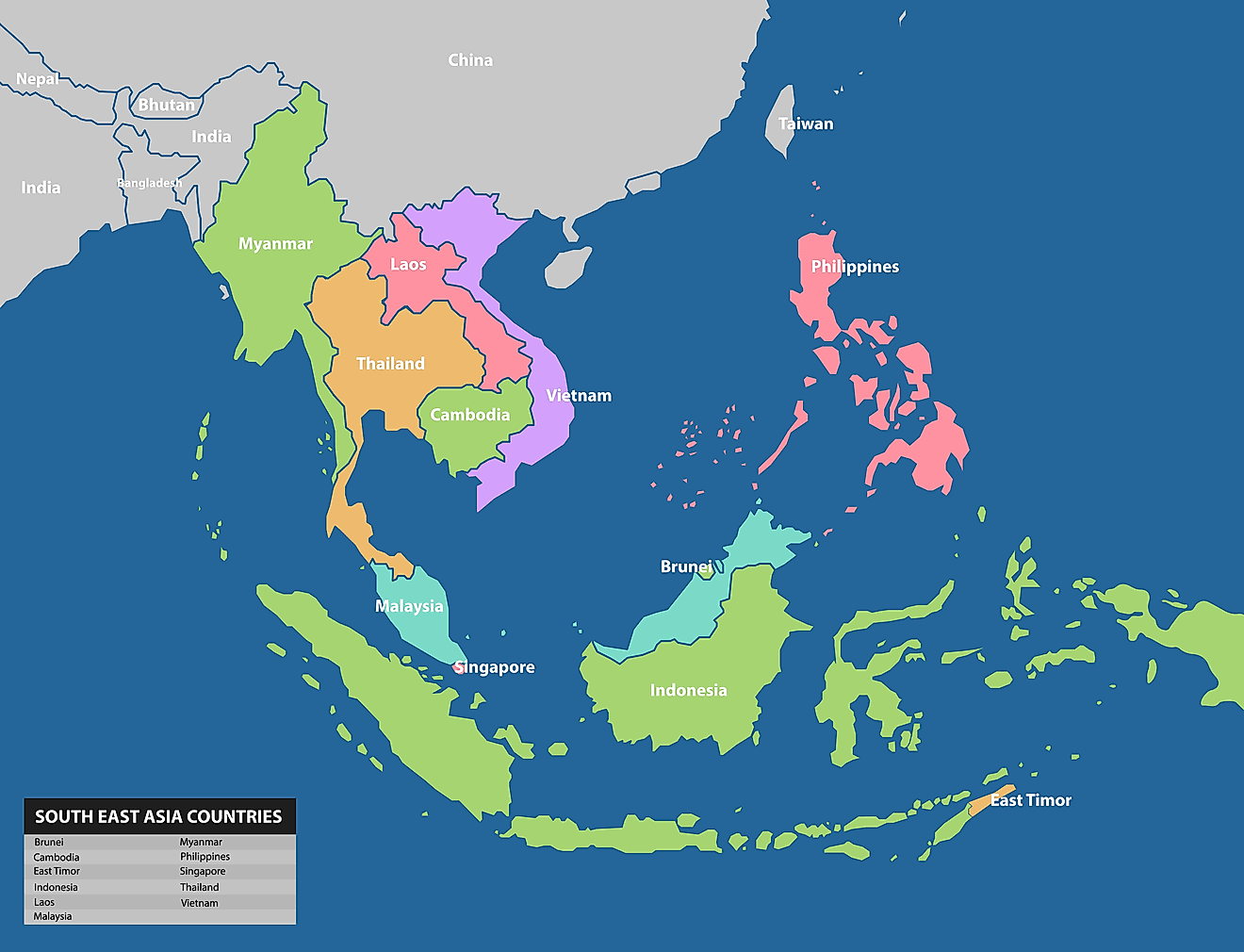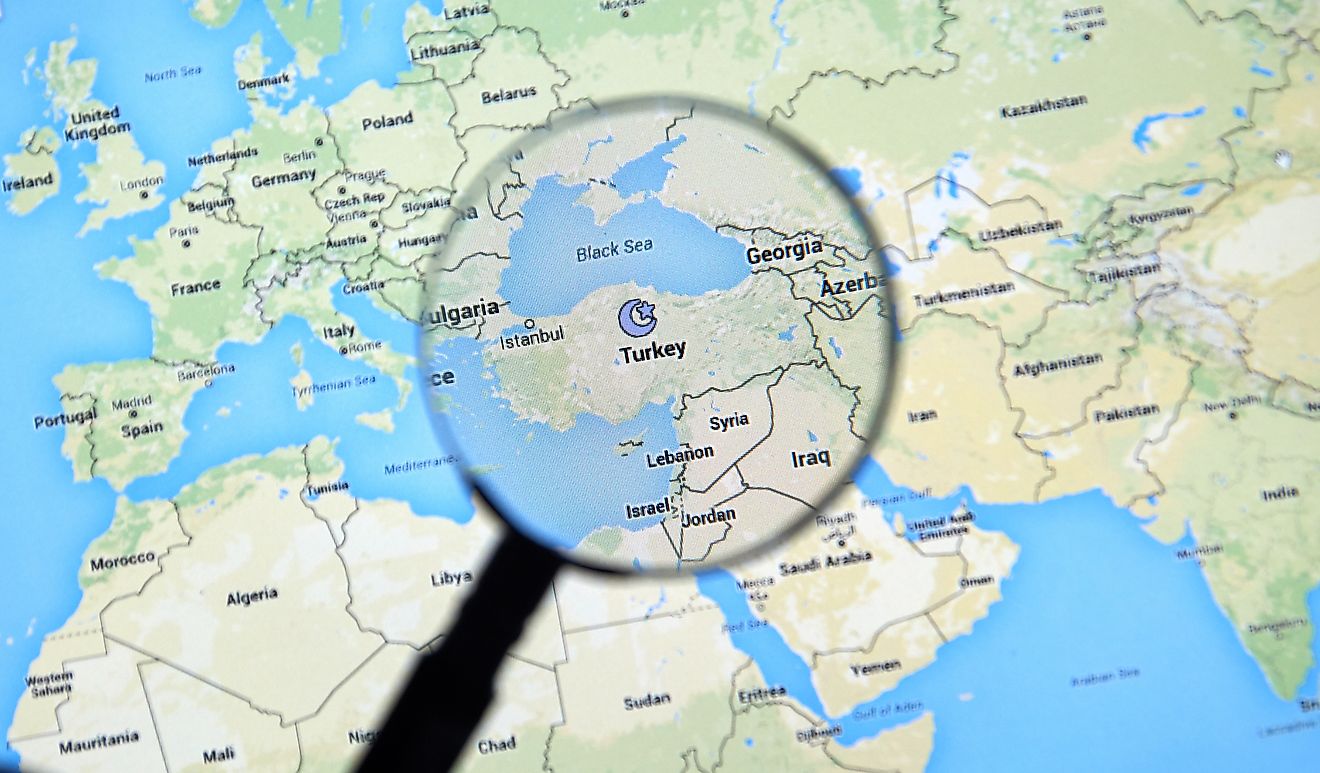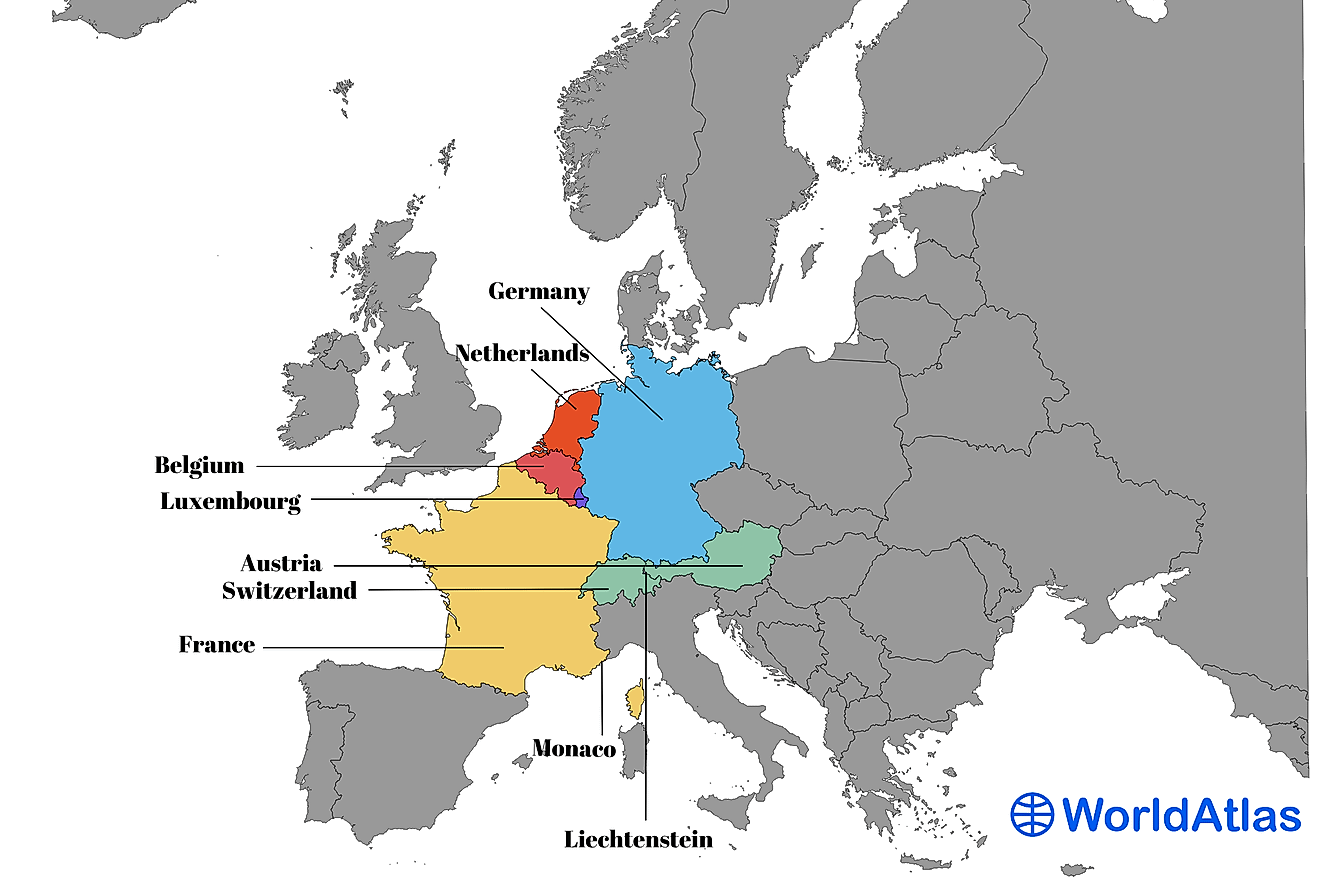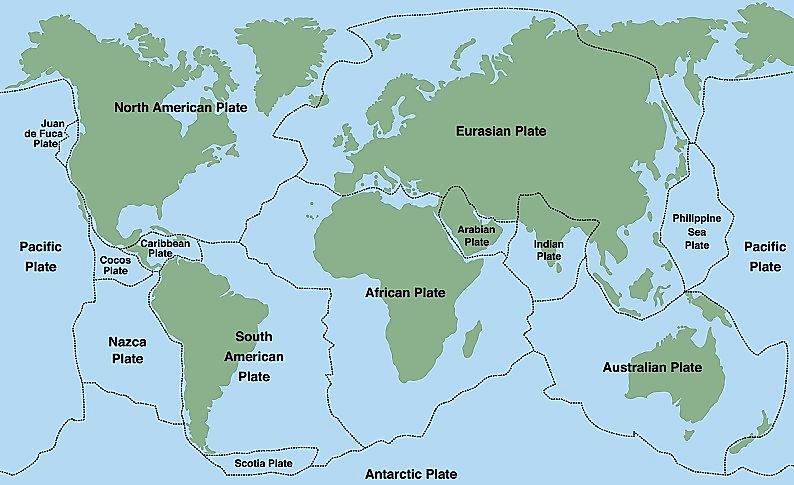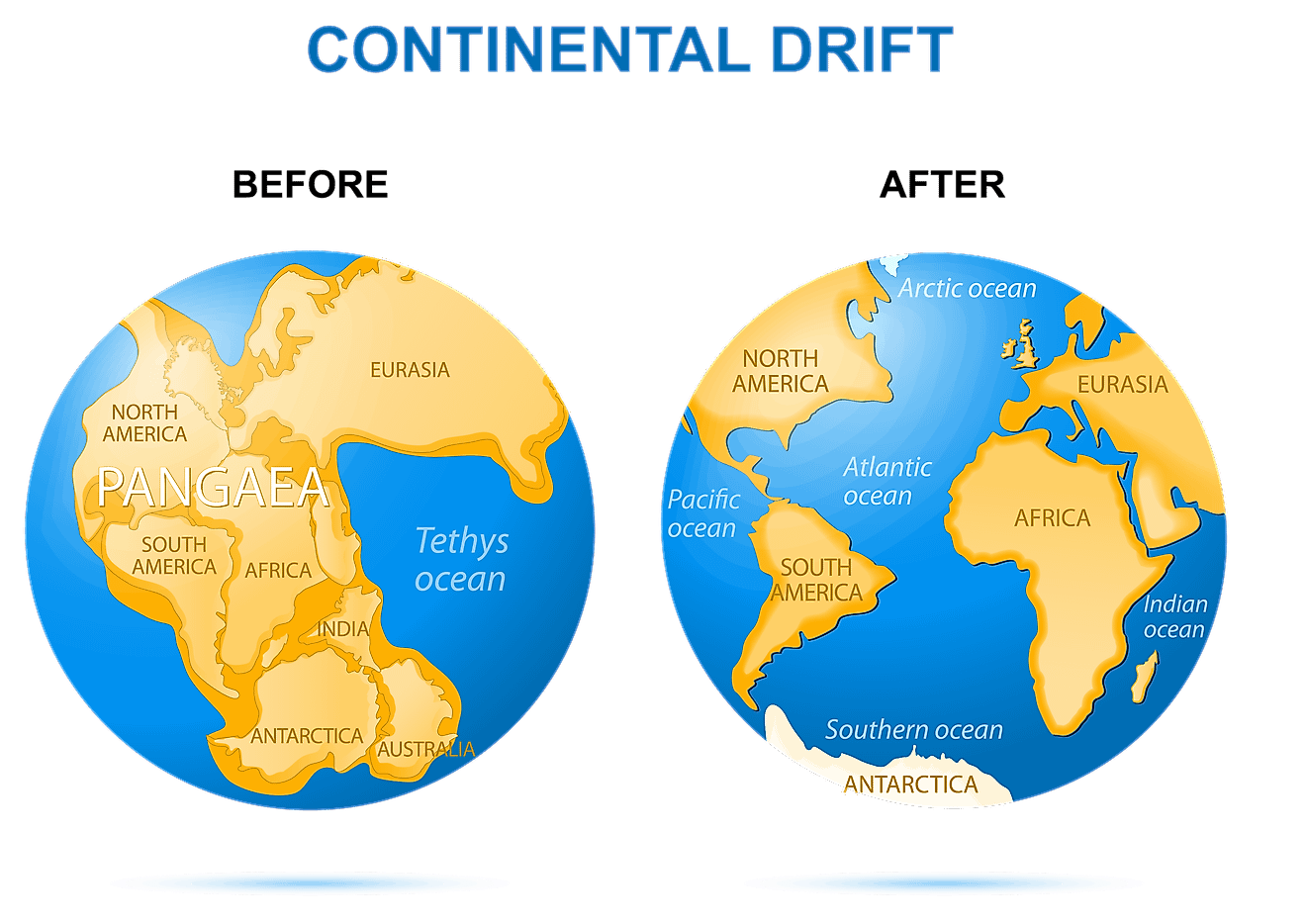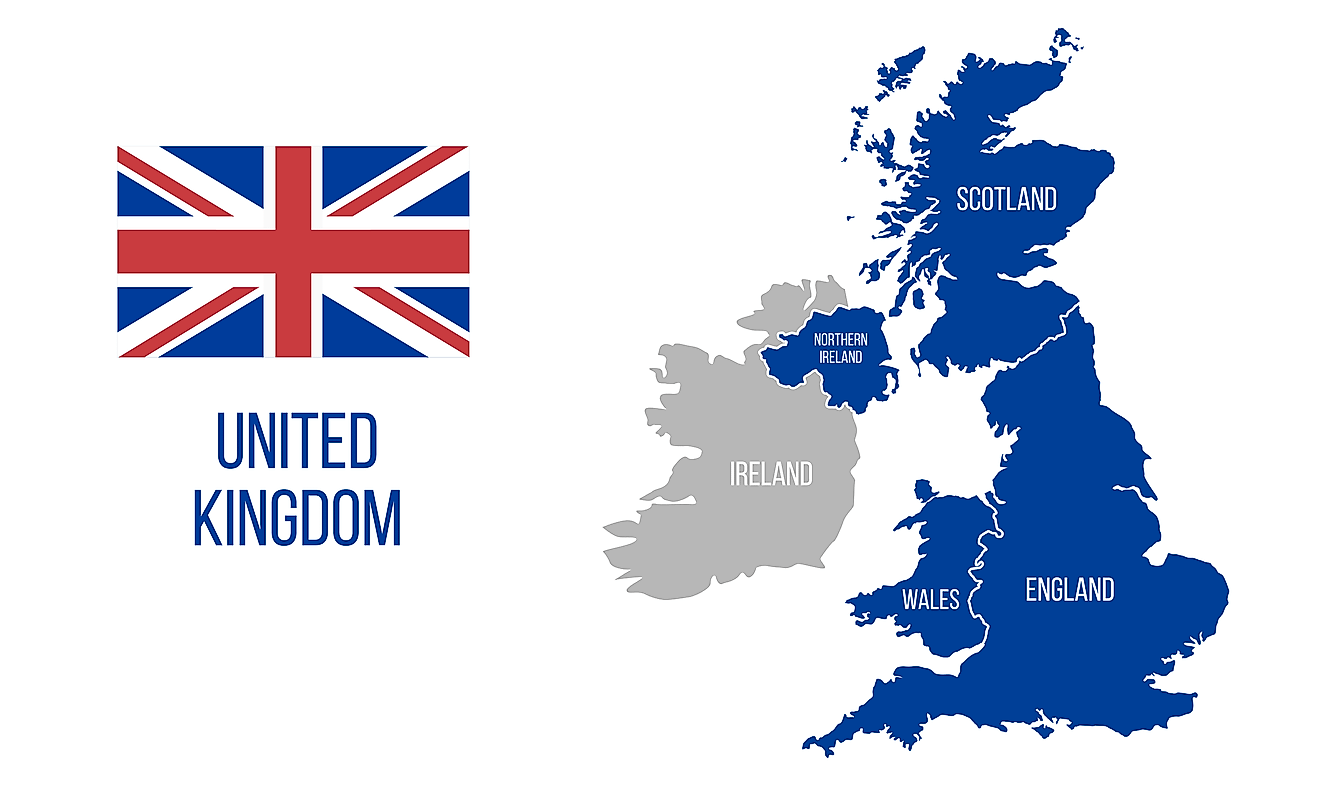
The Smallest Countries In The World
Imagine a place where you can walk from one end of the country to the other in less time than it takes to watch a movie. As unbelievable as it might seem, this is a real possibility in some of the world's smallest countries. Vatican City is by far the world's smallest country, with a mere total area of 0.49 km2. The following tiniest countries are Monaco at 2.0 km2, Nauru at 21 km2, Tuvalu at 26 km2, and San Marino at 61 km2. The remaining 10 are sorted out below.
- All 195 Countries Ranked By Total Area (Smallest To Largest)
- While Technically Not Countries, Other Micronations From Around the World
The 15 Smallest Countries In The World
| Rank | Country | Total in km2 | Region |
|---|---|---|---|
| 1 | Vatican City | 0.49 | Southern Europe |
| 2 | Monaco | 2.0 | Western Europe |
| 3 | Nauru | 21 | Oceania |
| 4 | Tuvalu | 26 | Oceania |
| 5 | San Marino | 61 | Southern Europe |
| 6 | Liechtenstein | 160 | Western Europe |
| 7 | Marshall Islands | 181 | Oceania |
| 8 | Saint Kitts and Nevis | 261 | Caribbean |
| 9 | Maldives | 300 | South Asia |
| 10 | Malta | 316 | Southern Europe |
| 11 | Grenada | 344 | Caribbean |
| 12 | Saint Vincent and the Grenadines | 389 | Caribbean |
| 13 | Barbados | 431 | Caribbean |
| 14 | Antigua and Barbuda | 442 | Caribbean |
| 15 | Seychelles | 452 | East Africa |
1. Vatican City
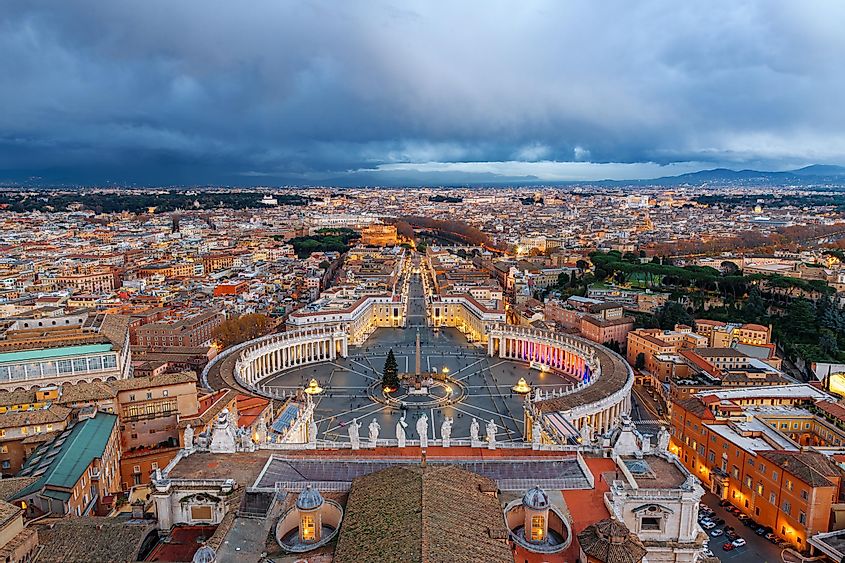
Vatican City overlooking St. Peter's Square
- Population: 764
- Total GDP: $16.14 million (2021 estimate, PPP)
- Currency: Euro
- Size Comparison: One-eighth the size of New York's Central Park
Vatican City, with an area of 0.49 square kilometers, holds the title as the smallest internationally recognized independent state in the world, not just Europe. A landlocked city-state within the confines of Rome, Italy, it boasts remarkable compactness.
Vatican City's boundaries encompass St. Peter's Square, the Sistine Chapel, and the Vatican Gardens, contributing to its mesmerizing architectural layout.
The country exists because, in 1929, Pope Pius XI signed a treaty as compensation for the Vatican's loss of influence elsewhere in Italy.
2. Monaco

- Population: 39,600
- Total GDP: 7.97 billion (estimate)
- Currency: Euro
- Size Comparison: 30 times smaller than Manhattan, New York
Monaco, situated on the French Riviera in Western Europe, encompasses an area of 1.994 square kilometers.
The densely populated principality thrives along the Mediterranean coastline, strategically hugging rugged, rising terrain.
Monaco's geographic hallmark, the Rock of Monaco, provides a vantage point that emphasizes its smallness, with the entirety of its urban expanse often visible from this point.
3. Nauru
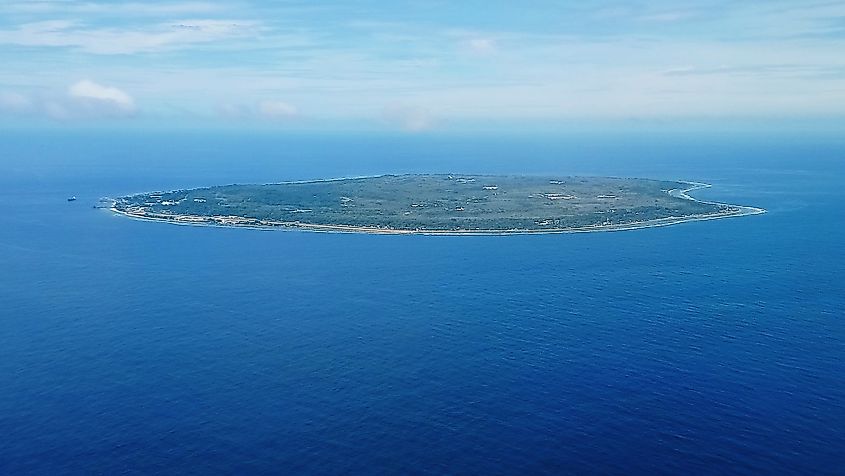
- Population: 12,100
- Total GDP: $160 million
- Currency: Australian Dollar
- Size Comparison: 75 times smaller than London
Nauru occupies an area of 20.9 square kilometers, earning it the distinction of being the smallest island country not only in Oceania but also in the world.
The central plateau, known as Topside, dominates the geography with phosphate rock outcrops scattered across its surface. An encircling narrow coastal strip fringed with palm trees provides a sharp contrast to this rocky interior.
Although its size is small, Nauru's features, such as the Buada Lagoon situated inland, demonstrate its compact nature that still provides plenty for its residents.
4. Tuvalu
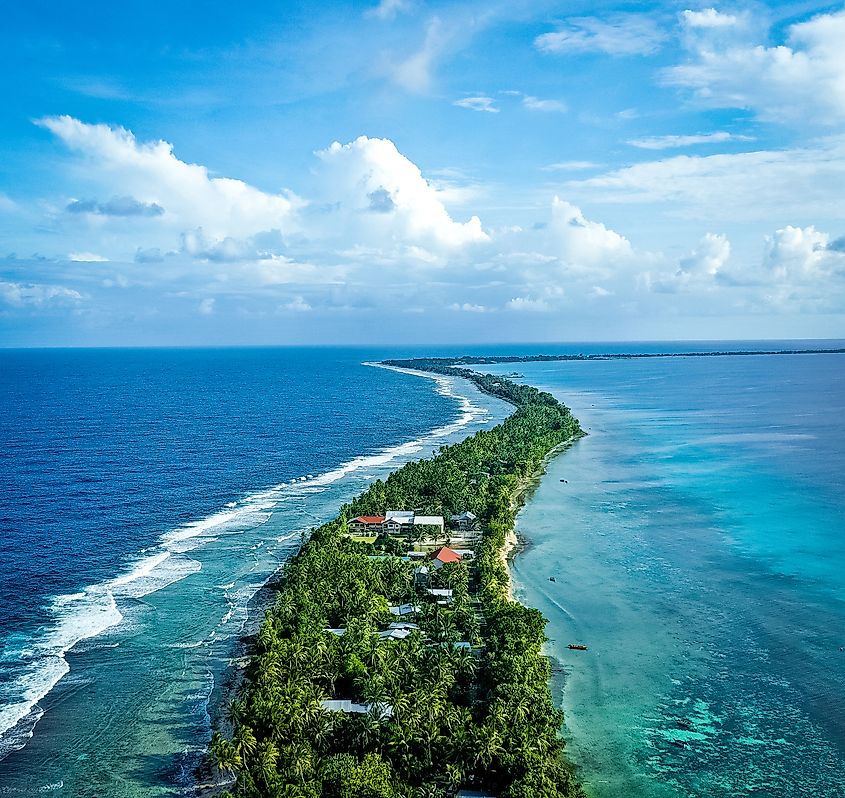
- Population: 10,600
- Total GDP: $70 million
- Currency: Tuvaluan Dollar & Australian Dollar
- Size Comparison: 401 times smaller than Hawaii
Spread across an area of just 25.8 square kilometers, Tuvalu is the second smallest country in Oceania.
It consists of a chain of nine coral atolls, with Funafuti, its largest atoll, serving as the country's capital. The highest point in Tuvalu is only 4.572 meters (15 feet) above sea level, accentuating its small size.
Despite its compressed dimensions, Tuvalu manages the Funafuti Conservation Area along its coast, an extensive marine protected region that is about 32.8 square kilometers of reef and land.
5. San Marino
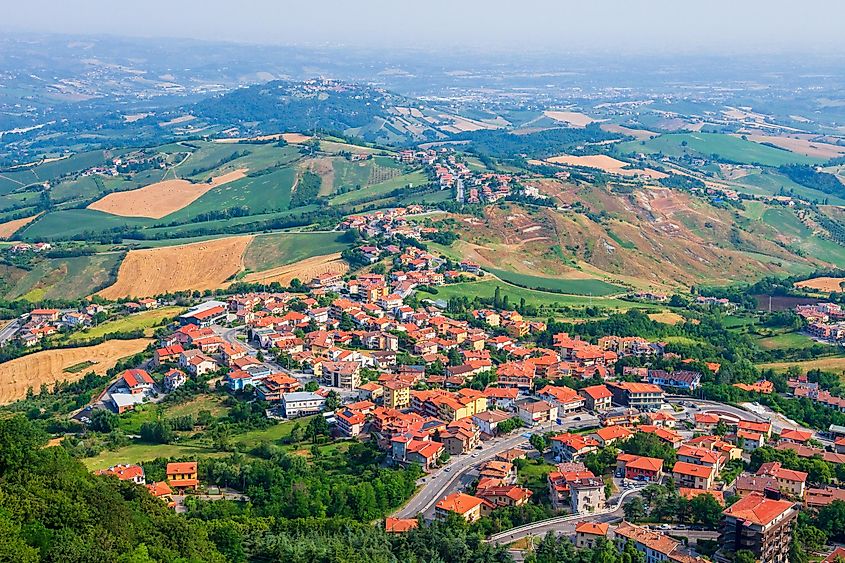
- Population: 35,200
- Total GDP: $2.03 billion
- Currency: Euro
- Size Comparison: 10 times smaller than Chicago
San Marino, with its 62 square kilometers, is an enclaved microstate situated on the northeastern side of the Apennine Mountains in Italy.
This hilltop republic, the third smallest country in Europe, encompasses a region typified by a rugged, mountainous landscape.
Mount Titano, the highest peak in the country, stands as a testament to the country's size, as the three towers perched atop it overlook virtually all of San Marino's territory.
6. Liechtenstein
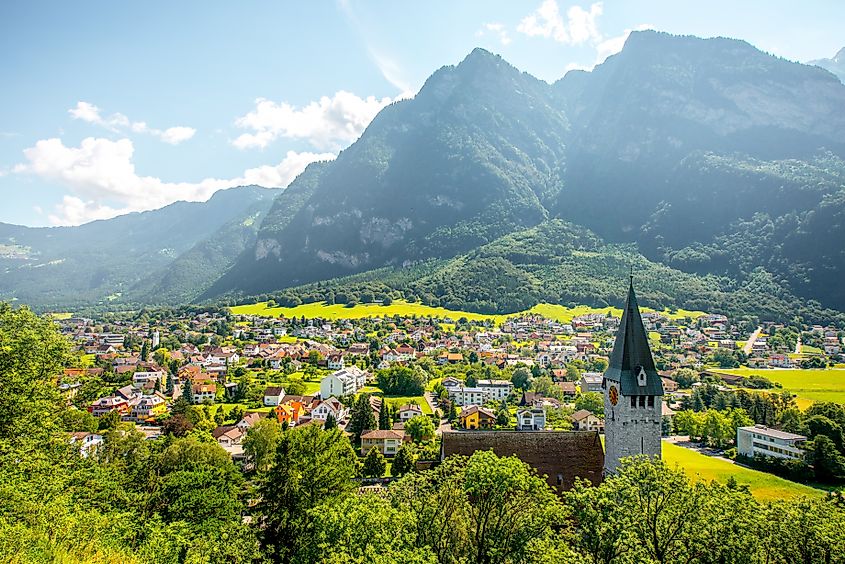
- Population: 39,900
- Total GDP: 7.94 billion (estimate)
- Currency: The Swiss Franc
- Size Comparison: Nine times smaller than Mexico City
The micro-state in Europe takes a leap in size comprising 160 square kilometers principality with 39,475 residents and a population density of 243 people per sq. km.
Lichtenstein neighbors Switzerland to the west and south and Austria to the east. Its capital city is Vaduz and German is the main language, while 34% of the inhabitants are foreigners.
The state is most known for its mountainous terrain with many winter sports resorts and tax haven attracting the active wealth. The country's economy depends on international companies that in turn benefit from Liechtenstein's low taxes.
7. Marshall Islands
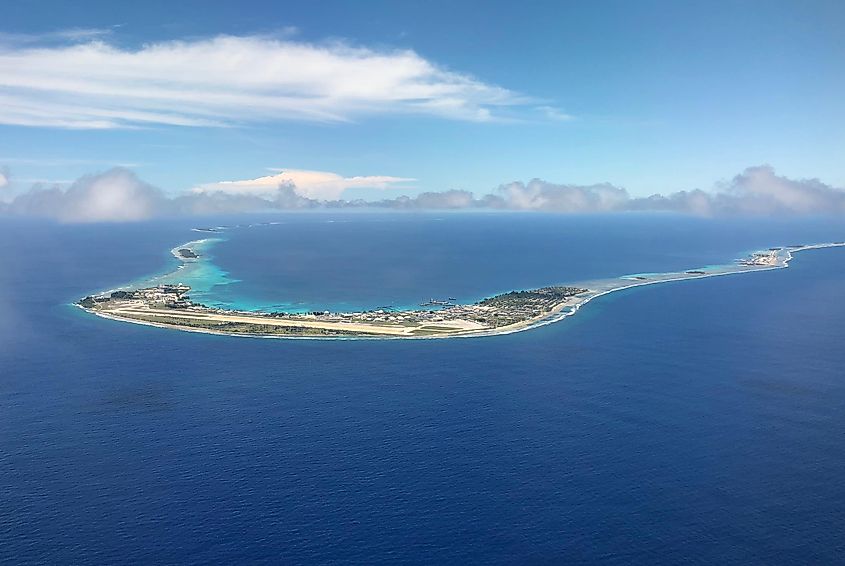
- Population: 39,700
- Total GDP: $310 million
- Currency: US Dollar
- Size Comparison: 269 times smaller than the Dominican Republic
Covering an area of 181.2 square kilometers, the Marshall Islands is an archipelago country in the central Pacific Ocean. It comprises 29 atolls and five islands, a geographical spread that exemplifies its size.
The islands are characterized by flat terrains not exceeding 3.4 meters (10 ft) above sea level on average. The largest atoll, Kwajalein, includes a substantial lagoon measuring approximately 2913.7 square kilometers, despite the island's thin, encircling 14.5 square kilometers.
Even with its seemingly diminutive landmass, the Marshall Islands' extensive aquatic territory is a resource in and of itself, helping the government to establish and maintain sovereignty.
8. Saint Kitts and Nevis
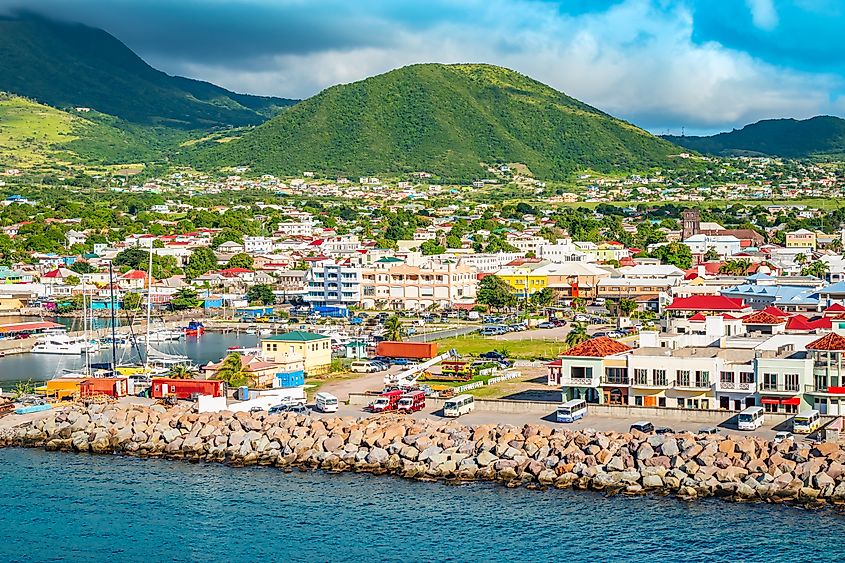
- Population: 48,400
- Total GDP: $1.13 billion
- Currency: East Caribbean Dollar
- Size Comparison: 12 times smaller than Rhode Island, US
Saint Kitts and Nevis, two island territories amassing a total area of 261.5 square kilometers, represent the smallest sovereign state in the Western Hemisphere.
Occupying a portion of the Lesser Antilles in the Caribbean Sea, the duo's geography consists primarily of volcanic landscapes.
The island's principal physical feature, Mount Liamuiga, reaches its maximum height at only 1,156 m.
9. Maldives

- Population: 544,700
- Total GDP: $7.2 billion
- Currency: Maldivian Rufiyaa
- Size Comparison: Two times smaller than Madrid
The Maldives, an Asian country composed entirely of coral islands, covers an area of approximately 310.7 square kilometers.
It sprawls across the Indian Ocean, near the southwestern coast of India, in a chain of 26 atolls. The highest point in this flat, low-lying country does not exceed 2.4 meters above sea level, a feature that makes the Maldives one of the lowest countries on Earth.
Despite its small size, the Maldives harbors extreme importance in the realm of biodiversity, with over 2000 species of fish calling the island chain home.
10. Malta
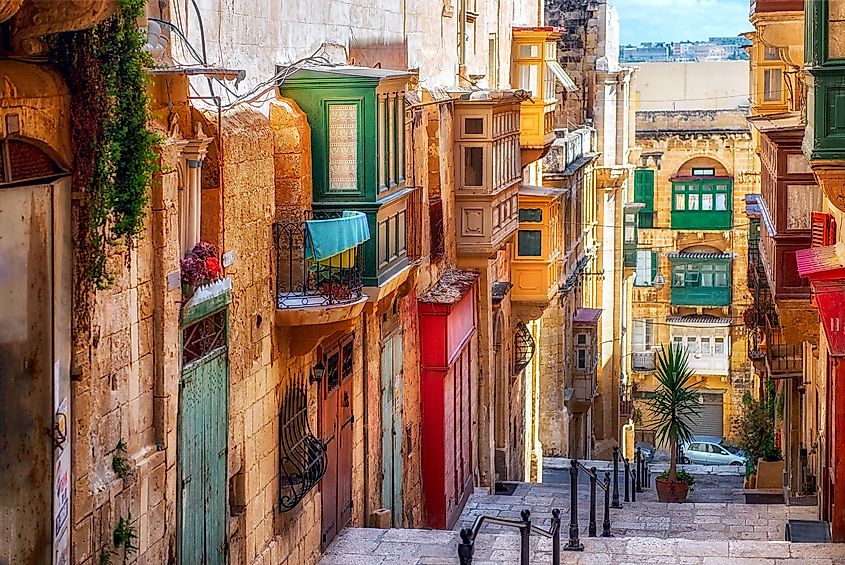
- Population: 550,100
- Total GDP: $22.74 billion
- Currency: Euro
- Size Comparison: Four times smaller than Rome
Malta is an archipelago located in the Mediterranean Sea and composed of three main islands. Its landscape is characterized by high hills and terraced fields, as well as numerous bays, harbors, and beaches.
The small country of 216 square kilometers in area is a popular cultural destination with rich history and prehistoric buildings, like the megalithic temples of Tarxien and the Mnajdra and Hagar Qim temples.
Malta has always been a strategically important place, as well as a scene of battles among its conquerors. It was ruled by several countries over the years, with all leaving a cultural mark, before final independence from Britain.
11. Grenada

- Population: 116,400
- Total GDP: $1.41 billion
- Currency: The Eastern Caribbean Dollar
- Size Comparison: 30 times smaller than Puerto Rico
The island country of Grenada, extending over 344 square kilometers, ranks as the second smallest independent country in North America.
Also located in the Lesser Antilles, Grenada features a terrain defined by a central highland spine, where the island's highest point, Mount Saint Catherine, stands tall at 840 m.
12. Saint Vincent and the Grenadines
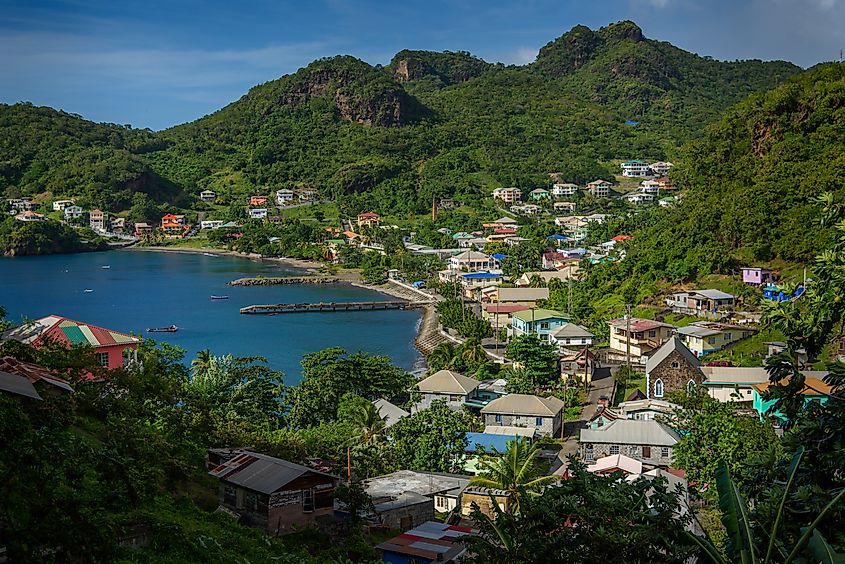
- Population: 112,000
- Total GDP: $1.13 billion
- Currency: Eastern Caribbean Dollar
- Size Comparison: Four times smaller than Los Angeles, California
Saint Vincent and the Grenadines, an archipelago country in the Windward Islands of the Lesser Antilles, comprises an area of 388 square kilometers.
It is an assemblage of the main island, Saint Vincent, and a chain of smaller islands, the Grenadines. The most significant geographic feature,
La Soufriere volcano is not only the highest peak in the country, but it has been active since 1995 with continuous eruptions.
13. Barbados
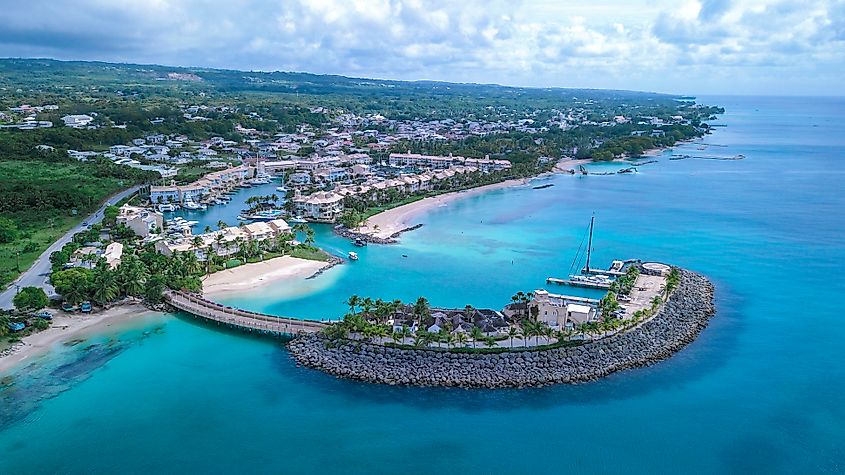
- Population: 263,700
- Total GDP: $6.86 billion
- Currency: Barbados Dollar
- Size Comparison: 18 times smaller than the Galapagos Islands, Ecuador
The Eastern Caribbean country is the 13th smallest independent state in the world spreading over an area of 430 square kilometers. Barbados is the easternmost island of the Lesser Antilles archipelago in the Atlantic, just off the coast of Venezuela and Guyana, and is visited by tourists in the Caribbean.
The sought-after destination encompasses a real paradise with beautiful weather under nearly constant sunshine. Thousands of tourists from around the world flock to Barbados each year.
14. Antigua and Barbuda
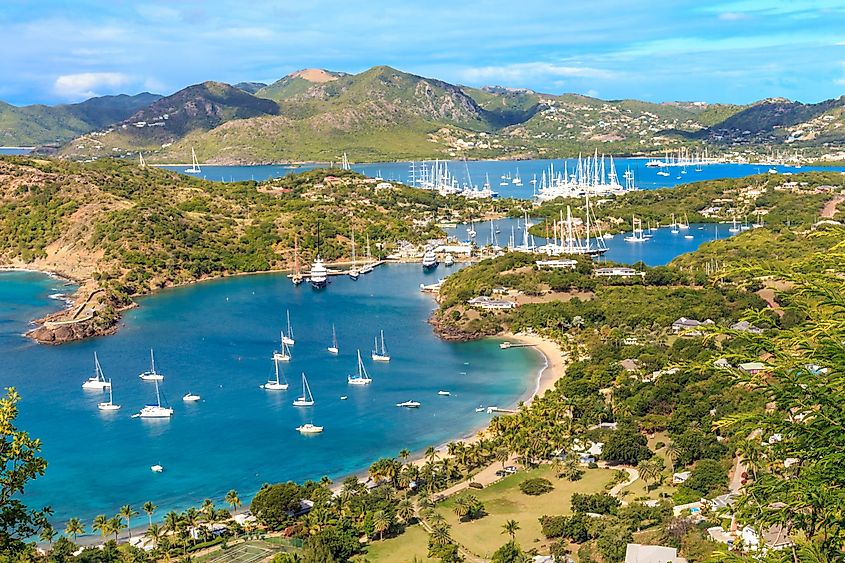
- Population: 103,600
- Total GDP: $2.13 billion
- Currency: Eastern Caribbean Dollar
- Size Comparison: 159 times smaller than Ireland
Covering an area of only 440 square kilometers, the dual-island country of Antigua and Barbuda is in the Caribbean Sea. Located where the Atlantic Ocean meets the Lesser Antilles, the terrain of both islands is generally hilly, covered in lush vegetation, and dotted with golden sand beaches.
15. Seychelles
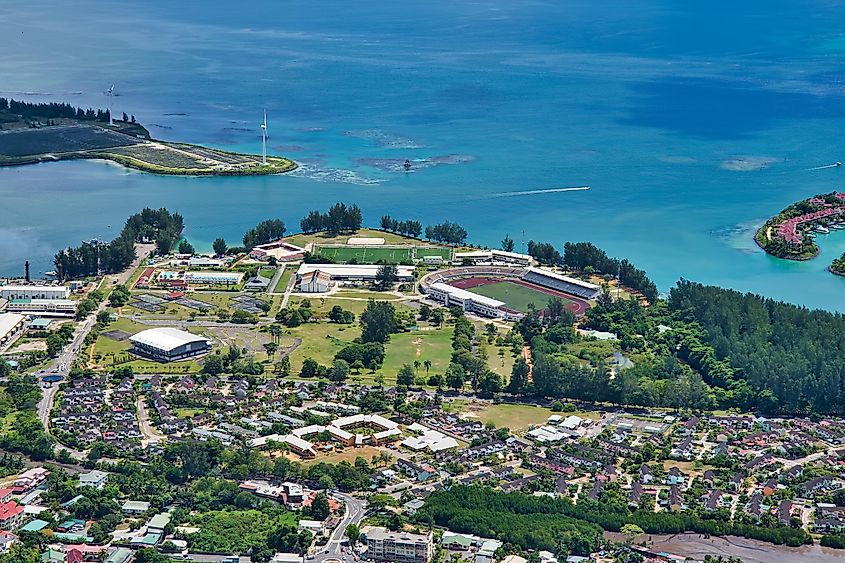
- Population: 105,000
- Total GDP: $2.2 billion
- Currency: Seychelles Rupee
- Size Comparison: 1,290 times smaller than Madagascar
Seychelles, an archipelago in the Indian Ocean, has a total land area of 453.2 square kilometers, making it Africa's smallest country. Composed of 115 islands, it displays a mix of coral atolls and granitic islands. For reference, the Morne Seychellois National Park occupies almost 20% of the main island of Mahé.
Final Thoughts
Despite their limited sizes, these independent countries persistently maintain their sovereignty and independent economies, affirming that a country's significance is not measured by its geographical expanse but by its capability to self-govern and sustain a distinctive culture. Small countries continually challenge our understanding of what defines a country, emphasizing that territorial dimension is just one attribute in the intricate character of statehood.
Map of the Smallest 15 Countries
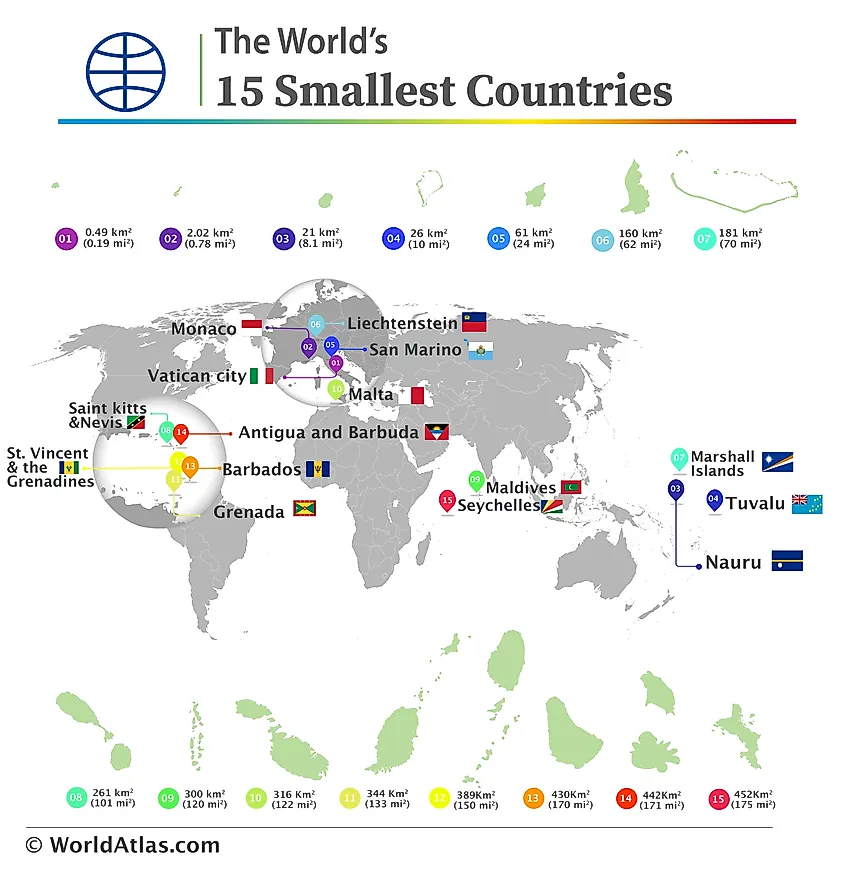
Micronations Around The World
Besides the small states mentioned above, many micronations around the globe claim sovereignty or independence but are not internationally recognized as such. Some of the most notable include Macau, Hong Kong, Taiwan, The Principality of Sealand, and Liberland.
Macau is a special administrative region of China and a former Portuguese colony. It spans just 32 km2 and is the most densely populated place in the world. Hong Kong is also a special administrative region of China and was a former British colony until 1997. It is one of the most developed places in the world and covers 1,104 km2 of area, making it almost twice the size of the Seychelles. Taiwan is a micronation claiming independence from China but is recognized by only 13 countries.
The Principality of Sealand is a micronation located on a former World War II fort off the coast of England, declared an independent state by British pirate radio broadcaster, Paddy Roy Bates, in 1967. About the size of a football field at just 0.004 km2, it has its own government and currency but is not recognized by the British government. Liberland is a self-proclaimed micronation founded in 2015, situated along the western bank of the Danube River. It has its own flag, government, motto, and currency, but is disputed by Croatia and Serbia and not recognized as a sovereign state by any country.
All 195 Countries Ranked By Total Area (Smallest To Largest)
| Rank | Country | Total in km2 (mi2) | Land in km2 (mi2) |
|---|---|---|---|
| 1 | Vatican City | 0.49 (0.19) | 0.49 (0.19) |
| 2 | Monaco | 2.0 (0.77) | 2.0 (0.77) |
| 3 | Nauru | 21 (8.1) | 21 (8.1) |
| 4 | Tuvalu | 26 (10) | 26 (10) |
| 5 | San Marino | 61 (24) | 61 (24) |
| 6 | Liechtenstein | 160 (62) | 160 (62) |
| 7 | Marshall Islands | 181 (70) | 181 (70) |
| 8 | Saint Kitts and Nevis | 261 (101) | 261 (101) |
| 9 | Maldives | 300 (120) | 298 (115) |
| 10 | Malta | 316 (122) | 316 (122) |
| 11 | Grenada | 344 (133) | 344 (133) |
| 12 | Saint Vincent and the Grenadines | 389 (150) | 389 (150) |
| 13 | Barbados | 431 (166) | 431 (166) |
| 14 | Antigua and Barbuda | 442 (171) | 442 (171) |
| 15 | Seychelles | 452 (175) | 455 (176) |
| 16 | Palau | 459 (177) | 459 (177) |
| 17 | Andorra | 468 (181) | 468 (181) |
| 18 | Saint Lucia | 616 (238) | 606 (234) |
| 19 | Micronesia | 702 (271) | 702 (271) |
| 20 | Singapore | 728 (281) | 716 (276) |
| 21 | Tonga | 747 (288) | 717 (277) |
| 22 | Dominica | 751 (290) | 751 (290) |
| 23 | Bahrain | 786 (303) | 786 (303) |
| 24 | Kiribati | 811 (313) | 811 (313) |
| 25 | São Tomé and Príncipe | 964 (372) | 964 (372) |
| 26 | Comoros | 1,862 (719) | 1,862 (719) |
| 27 | Mauritius | 2,040 (790) | 2,030 (780) |
| 28 | Luxembourg | 2,586 (998) | 2,586 (998) |
| 29 | Samoa | 2,842 (1,097) | 2,821 (1,089) |
| 30 | Cape Verde | 4,033 (1,557) | 4,033 (1,557) |
| 31 | Trinidad and Tobago | 5,130 (1,980) | 5,128 (1,980) |
| 32 | Brunei | 5,765 (2,226) | 5,265 (2,033) |
| 33 | Palestine | 6,220 (2,400) | 6,000 (2,300) |
| 34 | Cyprus | 9,251 (3,572) | 9,241 (3,568) |
| 35 | Lebanon | 10,452 (4,036) | 10,230 (3,950) |
| 36 | Jamaica | 10,991 (4,244) | 10,831 (4,182) |
| 37 | Gambia | 11,295 (4,361) | 10,000 (3,900) |
| 38 | Qatar | 11,586 (4,473) | 11,586 (4,473) |
| 39 | Vanuatu | 12,189 (4,706) | 12,189 (4,706) |
| 40 | Montenegro | 13,812 (5,333) | 13,452 (5,194) |
| 41 | Bahamas | 13,943 (5,383) | 10,010 (3,860) |
| 42 | East Timor | 14,919 (5,760) | 14,919 (5,760) |
| 43 | Eswatini | 17,364 (6,704) | 17,204 (6,643) |
| 44 | Kuwait | 17,818 (6,880) | 17,818 (6,880) |
| 45 | Fiji | 18,272 (7,055) | 18,274 (7,056) |
| 46 | Slovenia | 20,273 (7,827) | 20,151 (7,780) |
| 47 | Israel | 20,770 (8,020) | 20,330 (7,850) |
| 48 | El Salvador | 21,041 (8,124) | 20,721 (8,000) |
| 49 | Belize | 22,966 (8,867) | 22,806 (8,805) |
| 50 | Djibouti | 23,200 (9,000) | 23,180 (8,950) |
| 51 | North Macedonia | 25,713 (9,928) | 25,433 (9,820) |
| 52 | Rwanda | 26,338 (10,169) | 24,668 (9,524) |
| 53 | Haiti | 27,750 (10,710) | 27,560 (10,640) |
| 54 | Burundi | 27,834 (10,747) | 25,680 (9,920) |
| 55 | Equatorial Guinea | 28,051 (10,831) | 28,051 (10,831) |
| 56 | Albania | 28,748 (11,100) | 27,398 (10,578) |
| 57 | Solomon Islands | 28,896 (11,157) | 27,986 (10,805) |
| 58 | Armenia | 29,743 (11,484) | 28,342 (10,943) |
| 59 | Lesotho | 30,355 (11,720) | 30,355 (11,720) |
| 60 | Belgium | 30,528 (11,787) | 30,278 (11,690) |
| 61 | Moldova | 33,846 (13,068) | 32,891 (12,699) |
| 62 | Guinea-Bissau | 36,125 (13,948) | 28,120 (10,860) |
| 63 | Bhutan | 38,394 (14,824) | 38,394 (14,824) |
| 64 | Switzerland | 41,284 (15,940) | 39,997 (15,443) |
| 65 | Netherlands | 41,850 (16,160) | 33,893 (13,086) |
| 66 | Denmark | 43,094 (16,639) | 42,434 (16,384) |
| 67 | Estonia | 45,227 (17,462) | 42,388 (16,366) |
| 68 | Dominican Republic | 48,671 (18,792) | 48,320 (18,660) |
| 69 | Slovakia | 49,037 (18,933) | 48,105 (18,573) |
| 70 | Costa Rica | 51,100 (19,700) | 51,060 (19,710) |
| 71 | Bosnia and Herzegovina | 51,209 (19,772) | 51,187 (19,763) |
| 72 | Croatia | 56,594 (21,851) | 55,974 (21,612) |
| 73 | Togo | 56,785 (21,925) | 54,385 (20,998) |
| 74 | Latvia | 64,559 (24,926) | 62,249 (24,034) |
| 75 | Lithuania | 65,300 (25,200) | 62,680 (24,200) |
| 76 | Sri Lanka | 65,610 (25,330) | 62,732 (24,221) |
| 77 | Georgia | 69,700 (26,900) | 69,700 (26,900) |
| 78 | Ireland | 70,273 (27,133) | 68,883 (26,596) |
| 79 | Sierra Leone | 71,740 (27,700) | 71,620 (27,650) |
| 80 | Panama | 75,417 (29,119) | 74,340 (28,700) |
| 81 | Czech Republic | 78,871 (30,452) | 77,171 (29,796) |
| 82 | United Arab Emirates | 83,600 (32,300) | 83,600 (32,300) |
| 83 | Austria | 83,871 (32,383) | 82,445 (31,832) |
| 84 | Azerbaijan | 86,600 (33,400) | 86,100 (33,200) |
| 85 | Serbia | 88,361 (34,116) | 88,246 (34,072) |
| 86 | Jordan | 89,342 (34,495) | 88,802 (34,287) |
| 87 | Portugal | 92,226 (35,609) | 91,119 (35,181) |
| 88 | Hungary | 93,028 (35,918) | 89,608 (34,598) |
| 89 | South Korea | 100,210 (38,690) | 99,909 (38,575) |
| 90 | Iceland | 103,000 (40,000) | 100,250 (38,710) |
| 91 | Guatemala | 108,889 (42,042) | 107,159 (41,374) |
| 92 | Cuba | 109,884 (42,426) | 109,884 (42,426) |
| 93 | Bulgaria | 111,002 (42,858) | 108,612 (41,935) |
| 94 | Liberia | 111,369 (43,000) | 96,320 (37,190) |
| 95 | Honduras | 112,492 (43,433) | 111,890 (43,200) |
| 96 | Benin | 114,763 (44,310) | 114,305 (44,133) |
| 97 | Malawi | 118,484 (45,747) | 94,080 (36,320) |
| 98 | North Korea | 120,540 (46,540) | 120,538 (46,540) |
| 99 | Eritrea | 125,000 (48,000) | 125,000 (48,000) |
| 100 | Nicaragua | 130,373 (50,337) | 119,990 (46,330) |
| 101 | Greece | 131,957 (50,949) | 130,647 (50,443) |
| 102 | Tajikistan | 143,100 (55,300) | 141,510 (54,640) |
| 103 | Nepal | 147,516 (56,956) | 143,686 (55,477) |
| 104 | Bangladesh | 148,460 (57,320) | 134,208 (51,818) |
| 105 | Tunisia | 163,610 (63,170) | 155,360 (59,980) |
| 106 | Suriname | 163,820 (63,250) | 156,000 (60,000) |
| 107 | Uruguay | 176,215 (68,037) | 175,015 (67,574) |
| 108 | Cambodia | 181,035 (69,898) | 176,515 (68,153) |
| 109 | Syria | 185,180 (71,500) | 183,630 (70,900) |
| 110 | Senegal | 196,722 (75,955) | 192,530 (74,340) |
| 111 | Kyrgyzstan | 199,951 (77,202) | 191,801 (74,055) |
| 112 | Belarus | 207,600 (80,200) | 202,900 (78,300) |
| 113 | Guyana | 214,969 (83,000) | 196,849 (76,004) |
| 114 | Laos | 236,800 (91,400) | 230,800 (89,100) |
| 115 | Romania | 238,397 (92,046) | 231,291 (89,302) |
| 116 | Ghana | 238,533 (92,098) | 227,533 (87,851) |
| 117 | Uganda | 241,550 (93,260) | 197,100 (76,100) |
| 118 | United Kingdom | 242,495 (93,628) | 241,930 (93,410) |
| 119 | Guinea | 245,857 (94,926) | 245,717 (94,872) |
| 120 | Gabon | 267,668 (103,347) | 257,667 (99,486) |
| 121 | New Zealand | 270,467 (104,428) | 262,443 (101,330) |
| 122 | Burkina Faso | 274,222 (105,878) | 273,602 (105,638) |
| 123 | Ecuador | 276,841 (106,889) | 256,369 (98,985) |
| 124 | Philippines | 300,000 (120,000) | 298,170 (115,120) |
| 125 | Italy | 301,339 (116,348) | 294,140 (113,570) |
| 126 | Oman | 309,500 (119,500) | 309,500 (119,500) |
| 127 | Poland | 312,696 (120,733) | 311,888 (120,421) |
| 128 | Ivory Coast | 322,463 (124,504) | 318,003 (122,782) |
| 129 | Malaysia | 330,803 (127,724) | 329,613 (127,264) |
| 130 | Vietnam | 331,212 (127,882) | 310,070 (119,720) |
| 131 | Finland | 338,425 (130,667) | 303,816 (117,304) |
| 132 | Congo | 342,000 (132,000) | 341,500 (131,900) |
| 133 | Germany | 357,114 (137,882) | 348,672 (134,623) |
| 134 | Japan | 377,976 (145,937) | 364,546 (140,752) |
| 135 | Norway | 385,207 (148,729) | 365,957 (141,297) |
| 136 | Zimbabwe | 390,757 (150,872) | 386,847 (149,362) |
| 137 | Paraguay | 406,752 (157,048) | 397,302 (153,399) |
| 138 | Iraq | 438,317 (169,235) | 437,367 (168,868) |
| 139 | Morocco | 446,550 (172,410) | 446,300 (172,300) |
| 140 | Uzbekistan | 447,400 (172,700) | 425,400 (164,200) |
| 141 | Sweden | 447,425 (172,752) | 407,284 (157,253) |
| 142 | Papua New Guinea | 462,840 (178,700) | 452,860 (174,850) |
| 143 | Cameroon | 475,442 (183,569) | 472,710 (182,510) |
| 144 | Turkmenistan | 488,100 (188,500) | 469,930 (181,440) |
| 145 | Spain | 505,992 (195,365) | 498,980 (192,660) |
| 146 | Thailand | 513,120 (198,120) | 510,890 (197,260) |
| 147 | Yemen | 555,000 (214,000) | 555,000 (214,000) |
| 148 | Kenya | 580,367 (224,081) | 569,140 (219,750) |
| 149 | Botswana | 581,730 (224,610) | 566,730 (218,820) |
| 150 | Madagascar | 587,041 (226,658) | 581,540 (224,530) |
| 151 | Ukraine | 603,550 (233,030) | 579,300 (223,700) |
| 152 | Central African Republic | 622,984 (240,535) | 622,984 (240,535) |
| 153 | Somalia | 637,657 (246,201) | 627,337 (242,216) |
| 154 | France | 640,679 (247,368) | 640,427 (247,270) |
| 155 | South Sudan | 644,329 (248,777) | 644,329 (248,777) |
| 156 | Afghanistan | 652,867 (252,073) | 652,867 (252,073) |
| 157 | Myanmar | 676,578 (261,228) | 653,508 (252,321) |
| 158 | Zambia | 752,612 (290,585) | 743,398 (287,028) |
| 159 | Chile | 756,102 (291,933) | 743,812 (287,187) |
| 160 | Turkey | 783,562 (302,535) | 769,632 (297,157) |
| 161 | Mozambique | 801,590 (309,500) | 786,380 (303,620) |
| 162 | Namibia | 825,615 (318,772) | 823,290 (317,870) |
| 163 | Pakistan | 881,913 (340,509) | 856,690 (330,770) |
| 164 | Venezuela | 916,445 (353,841) | 882,050 (340,560) |
| 165 | Nigeria | 923,768 (356,669) | 910,768 (351,649) |
| 166 | Tanzania | 945,087 (364,900) | 885,800 (342,000) |
| 167 | Egypt | 1,002,450 (387,050) | 995,450 (384,350) |
| 168 | Mauritania | 1,030,700 (398,000) | 1,025,520 (395,960) |
| 169 | Bolivia | 1,098,581 (424,164) | 1,083,301 (418,265) |
| 170 | Ethiopia | 1,104,300 (426,400) | 1,096,630 (423,410) |
| 171 | Colombia | 1,141,748 (440,831) | 1,038,700 (401,000) |
| 172 | South Africa | 1,221,037 (471,445) | 1,214,470 (468,910) |
| 173 | Mali | 1,240,192 (478,841) | 1,220,190 (471,120) |
| 174 | Angola | 1,246,700 (481,400) | 1,246,700 (481,400) |
| 175 | Niger | 1,267,000 (489,000) | 1,266,700 (489,100) |
| 176 | Chad | 1,284,000 (496,000) | 1,259,200 (486,200) |
| 177 | Peru | 1,285,216 (496,225) | 1,279,996 (494,209) |
| 178 | Mongolia | 1,564,110 (603,910) | 1,553,556 (599,831) |
| 179 | Iran | 1,648,195 (636,372) | 1,531,595 (591,352) |
| 180 | Libya | 1,759,540 (679,360) | 1,759,540 (679,360) |
| 181 | Sudan | 1,861,484 (718,723) | 1,731,671 (668,602) |
| 182 | Indonesia | 1,904,569 (735,358) | 1,811,569 (699,451) |
| 183 | Mexico | 1,964,375 (758,449) | 1,943,945 (750,561) |
| 184 | Saudi Arabia | 2,149,690 (830,000) | 2,149,690 (830,000) |
| 185 | DR Congo | 2,344,858 (905,355) | 2,267,048 (875,312) |
| 186 | Algeria | 2,381,741 (919,595) | 2,381,741 (919,595) |
| 187 | Kazakhstan | 2,724,900 (1,052,100) | 2,699,700 (1,042,400) |
| 188 | Argentina | 2,780,400 (1,073,500) | 2,736,690 (1,056,640) |
| 189 | India | 3,287,263 (1,269,219) | 2,973,190 (1,147,960) |
| 190 | Australia | 7,692,024 (2,969,907) | 7,633,565 (2,947,336) |
| 191 | Brazil | 8,515,767 (3,287,956) | 8,460,415 (3,266,584) |
| 192 | United States | 9,833,517 (3,796,742) | 9,147,593 (3,531,905) |
| 193 | China | 9,596,961 (3,705,407) | 9,326,410 (3,600,950) |
| 194 | Canada | 9,984,670 (3,855,100) | 9,093,507 (3,511,023) |
| 195 | Russia | 17,098,246 (6,601,670) | 16,378,410 (6,323,740) |
